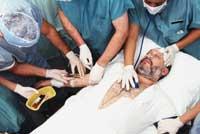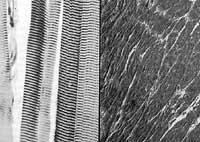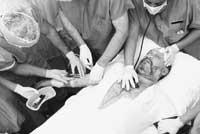Muscles to repair heart attack
2001/05/29 Galarraga Aiestaran, Ana - Elhuyar Zientzia
The first trial will be held in Rotterdam, and before the end of the year more tests will be conducted at Duke University and elsewhere in the United States. The technique they will use is very simple: take the muscle cells (myoblasts) of the patient's leg, make them proliferate outside the body and, through a catheter, introduce them into the affected heart areas.

Duke University researcher Doris Taylor said his work has benefited from the latest techniques based on cell replacement for the treatment of heart attacks. These last trials are being conducted with stem cells, but are still in the first phase. Taylor believes that five years will have to wait to begin clinical trials in humans.
In addition, myoblasts, unlike stem cells, can be achieved virtually without limits. Stem cells are limited in each patient and to avoid rejection of transplants it is important to use the patient's cells, so obtaining cells to graft is a clear advantage.
On the other hand, the myoblasts begin to contract together with other heart cells as soon as they are inserted. Stem cells, on the other hand, act as heart cells and if the heart is inserted into the affected area, they act as if they were damaged.
More than 3.5 million people suffer a stroke a year in the world and survivors are at risk of resurfacing. To combat damage, even though healthy heart cells grow more, eventually the heart loses strength. Thus, in the United States and Europe every year 410,000 patients die from heart attack. Therefore, the success of this technique could stimulate the hope of curing the infarction.

Gai honi buruzko eduki gehiago
Elhuyarrek garatutako teknologia






